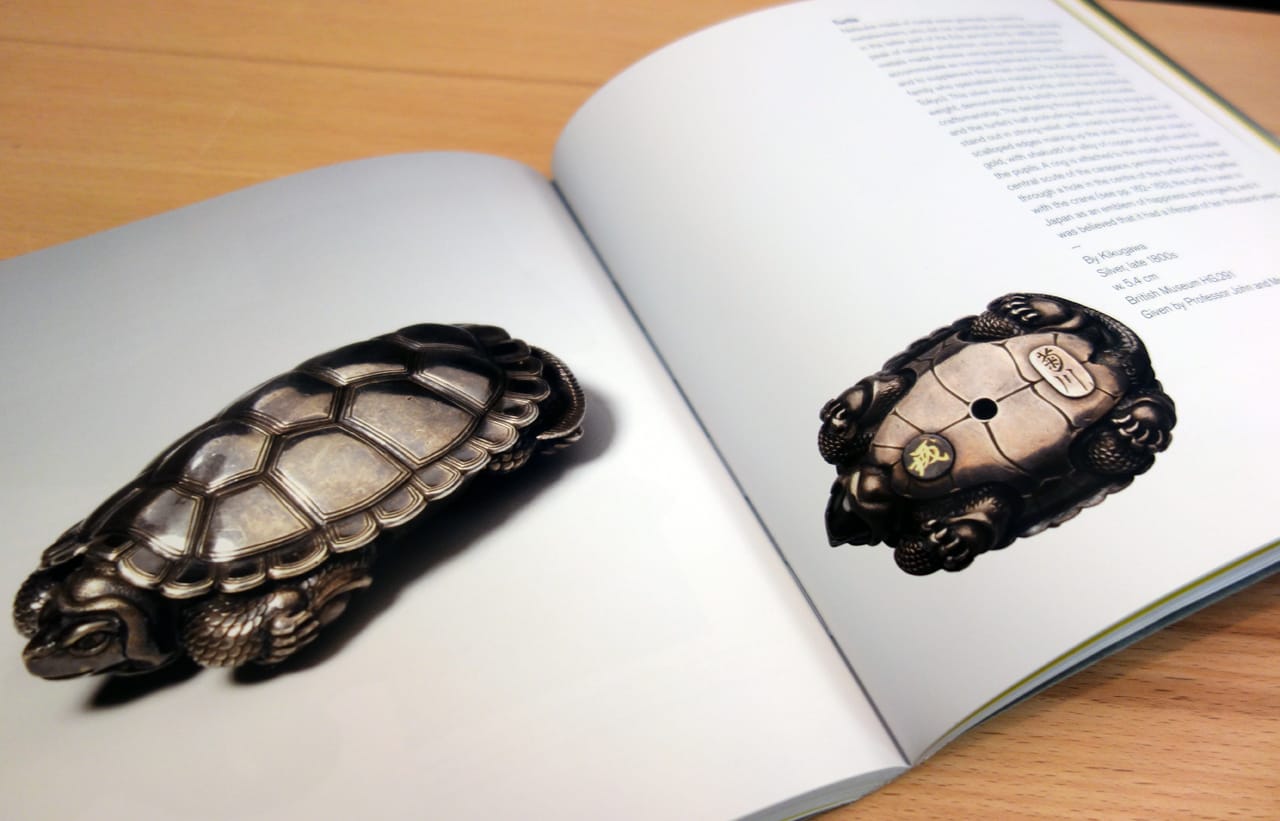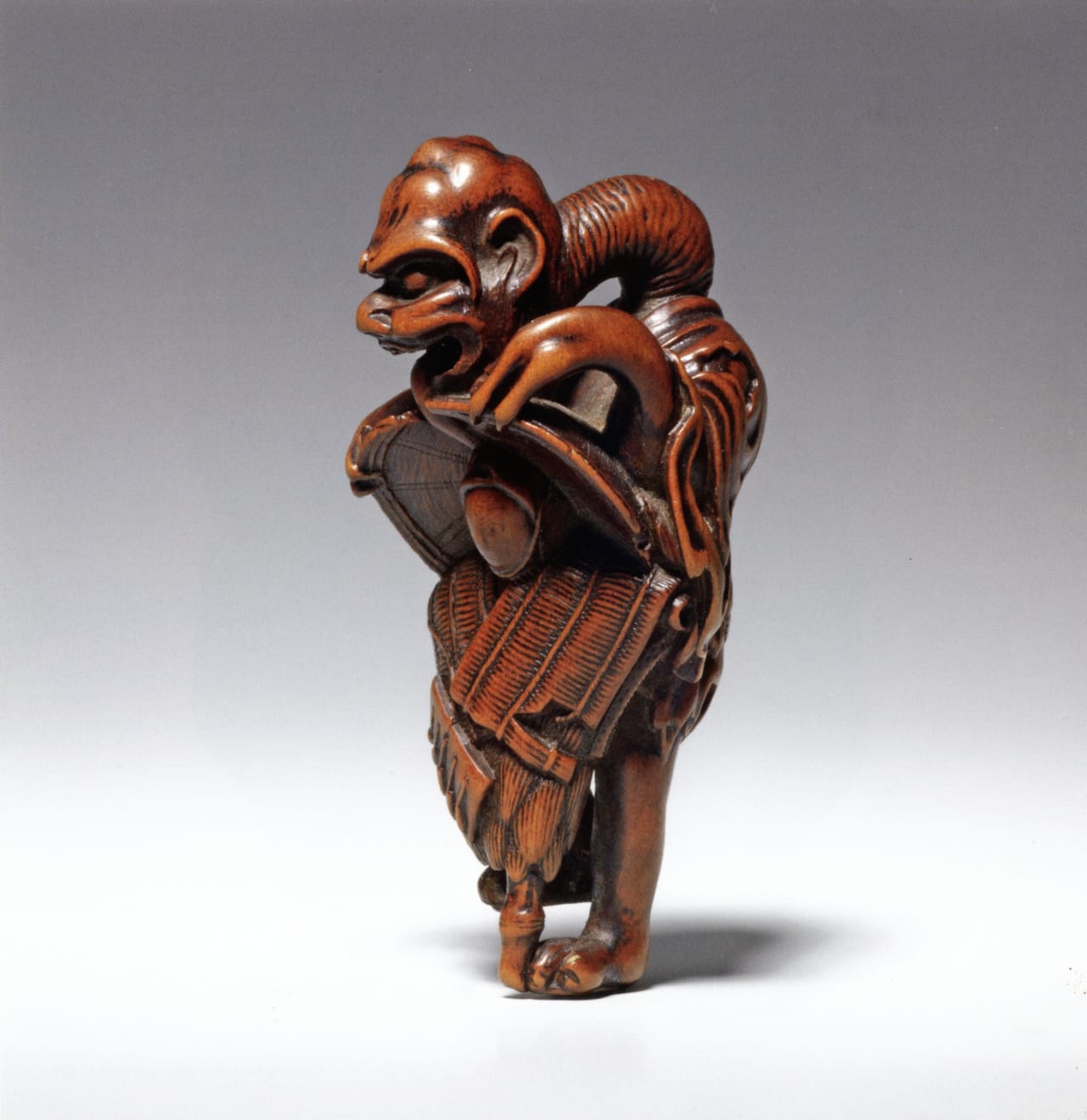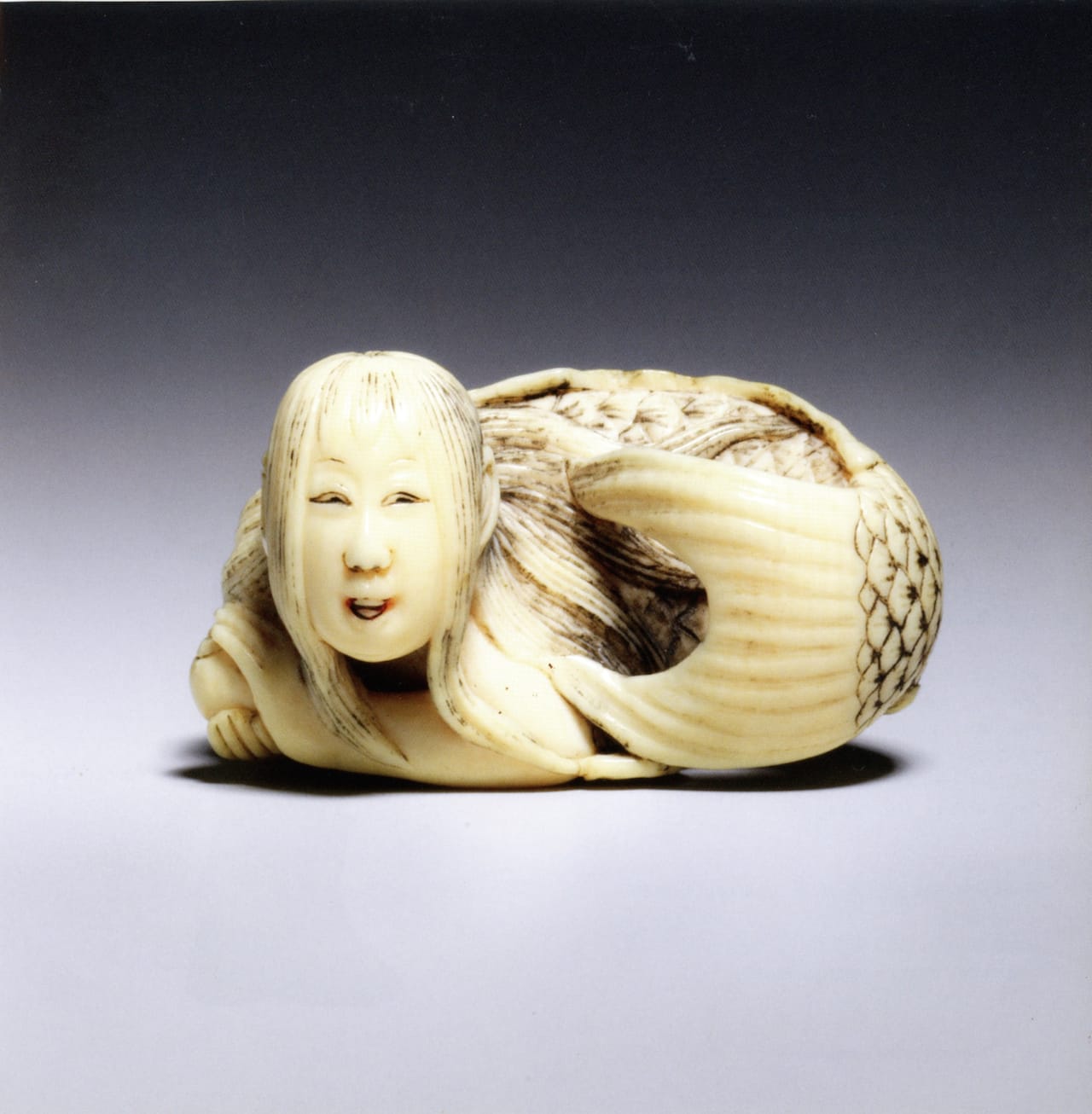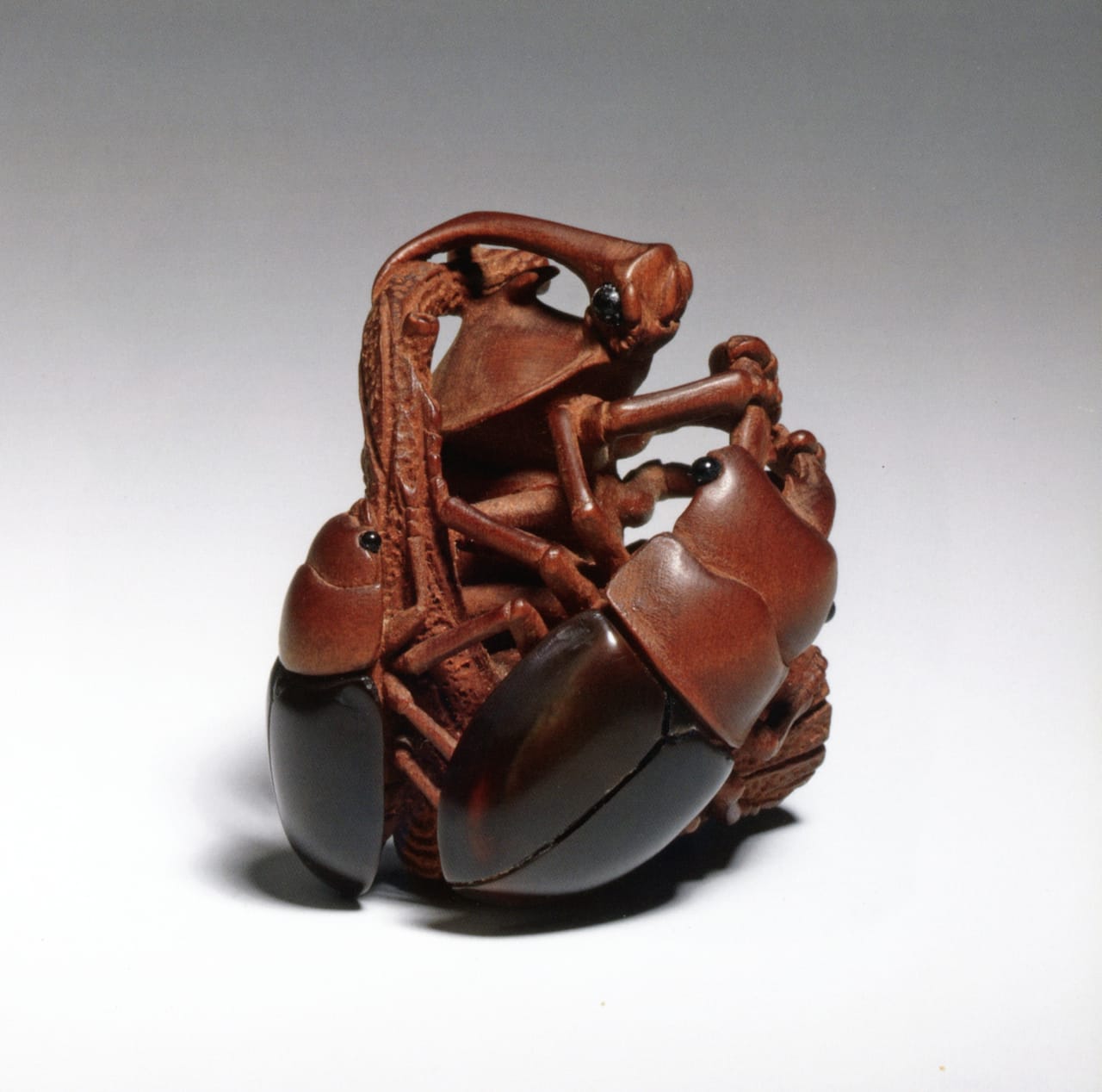The Ghosts, Mermaids, and Beautiful Rats of Japan's Tiny Netsuke Carvings
Miniature meditating skeletons, snarling cats, eerie ghosts, and gods of fortune carved in ivory, wood, and horn adorned the sashes of Japanese men throughout the Edo period.

Miniature meditating skeletons, snarling cats, eerie ghosts, and gods of fortune carved in ivory, wood, and horn adorned the sashes of Japanese men throughout the Edo period. From the 17th to 19th century, these netsuke carvings evolved as an increasingly elaborate art, eventually collected around the world. The British Museum in London has over 2,300 examples in its collection, 100 of which were newly photographed for Netsuke: 100 Miniature Masterpieces from Japan by Japanese art curator Noriko Tsuchiya, published by Overlook Press.

The book was originally released by the British Museum in 2014, alongside a small exhibition highlighting the diminutive art. Neil MacGregor, former director of the museum, notes in his forward that during the Edo period, the simple robes Japanese men were mandated to wear by rulers had to “be subdued, but this could be offset with spectacular accessories, providing these were worn discreetly.”
As the traditional kimono has no pockets, these accessories were suspended from a sash with silk cords and secured with a small toggle. That toggle became the netsuke, a small and highly personalized touch.
“The simplest functional netsuke could be a piece of stone, a twig, a dried gourd, nuts or shells, and the origin of netsuke is likely to be found in these naturally occurring objects,” Noriko Tsuchiya writes in Netsuke. Some Edo netsuke referenced this past, appearing like a gourd in a net or a small stone, albeit one that secretly opened to reveal an erotic scene.
“They provide a fascinating glimpse into Japanese popular culture of the late Edo period, featuring themes from daily life, legend, and the world of the imagination,” Tsuchiya adds. Foreigners were popular designs, like a wide-eyed Dutchman holding a fighting rooster from 1780, as were the twelve zodiac animals. An especially beautiful goat from the late-19th century by Kaigyokusai Masatsugu (pictured above) has fur delicately carved in ivory, with great attention to the small features of its nose, hooves, and ears.



One netsuke from the early 19th century by Sōshin is of the monster Mikoshi-Nyūdō, whose claws are draped over the shoulders of a scarecrow, his long tongue licking over the brim of his prey’s hat. A subsequent netsuke shows the next scene, where the poor scarecrow has collapsed, his frozen face pressed below Mikoshi-Nyūdō, who continues to cling to the debris. Other netsuke similarly depicted the supernatural and fantastic, whether the unsettling Ubume — a ghost of a woman who perished in childbirth — by Naitō Kōseki from the early 20th century, or a more benign mermaid by Natsuki from 1790, with a bright smile and scaled tail in ivory.
Each netsuke is tiny enough to put in your pocket, and the book reveals their humble details up close, whether a quiet sleeping rat, or fantastic flailing dragon.









Netsuke: 100 Miniature Masterpieces from Japan by Noriko Tsuchiya is out from Overlook Press.





